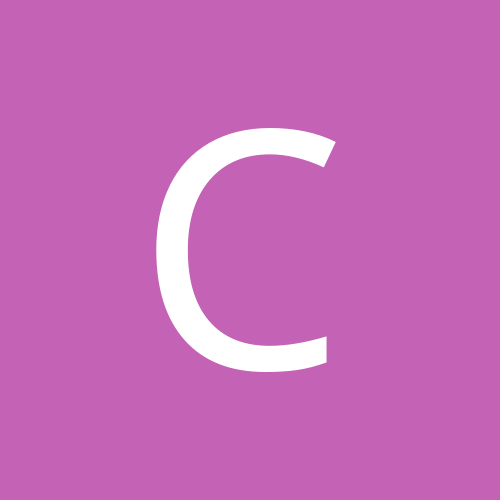Search the Community
Showing results for tags 'image scale'.
Found 1 result
-
I have a problem with image scale being different under android and under windows. I have tried to simplify this for Delphi Praxis. It started with trying to draw a black box around tEdit components on Android, so you can actually see them! On windows, the image.scale is left to the default (1,1). On android (at least on my phone), it has to be set to (0.31, 0.31) or the results are weird / awful. To duplicate it, make a new FMX project in a simple window. On the form place a tImage and 2 x tEdit (with some text in each). Use the code below, and put Resize into the Form.Resize in the object inspector. Run it on android and on windows and you should see the oddity. I do not know whether there may be something about using / not using high DPI on the android: ClientWidth x ClientHeight shows as 338 x 660, whereas the Samsung S22 is supposed to have a screen of 1080 x 2340, but I do not know how to access this. I will be interested in your ideas and findings please. unit Unit1; interface uses System.SysUtils, System.Types, System.UITypes, System.Classes, System.Variants, FMX.Types, FMX.Controls, FMX.Forms, FMX.Graphics, FMX.Dialogs, FMX.Controls.Presentation, FMX.Edit, FMX.Memo.Types, FMX.ScrollBox, FMX.Memo, FMX.Objects; type TForm1 = class(TForm) Edit1: TEdit; Edit2: TEdit; Image1: TImage; procedure FormResize(Sender: TObject); private { Private declarations } public { Public declarations } end; var Form1: tForm1; implementation {$R *.fmx} procedure tForm1.FormResize(Sender: TObject); var Rect, e1Rect, e2Rect : tRectf; begin Image1.Position.X := 20; Image1.Position.Y := 30; Edit1.Position.X := 40; Edit1.Position.Y := 60; Edit2.Position.X := ClientWidth - Edit2.Width - 60; Edit2.Position.Y := 60; //Create rectangle positions for edit boxes with respect to the image. e1Rect := tRectf.Create( Edit1.Position.X - Image1.Position.X, Edit1.Position.Y - Image1.Position.Y, Edit1.Position.X - Image1.Position.X + Edit1.Width, Edit1.Position.Y - Image1.Position.Y + Edit1.Height); e2Rect := tRectf.Create( Edit2.Position.X - Image1.Position.X, Edit2.Position.Y - Image1.Position.Y, Edit2.Position.X - Image1.Position.X + Edit2.Width, Edit2.Position.Y - Image1.Position.Y + Edit2.Height); // --------------- Problem Area ------------------- //Need this for Android: Image1.Scale.X := 0.31; Image1.Scale.Y := 0.31; Image1.Height := 200 * 3; Image1.Width := 3 * (ClientWidth - 40); Image1.Bitmap.SetSize(round(Image1.Width), round(Image1.Height)); //Need this for Windows { Image1.Height := 200; Image1.Width := (ClientWidth - 40); Image1.Bitmap.SetSize(round(Image1.Width), round(Image1.Height)); } // ------------------------------------------------- Image1.Bitmap.Canvas.Stroke.Kind := tBrushKind.Solid; Image1.Bitmap.Canvas.Stroke.Color := tAlphaColorRec.Black; Image1.Bitmap.Canvas.Stroke.Thickness := 2; Image1.Bitmap.Canvas.BeginScene; //Colour the whole image first Image1.Bitmap.Canvas.Clear(tAlphaColorRec.Lightsalmon); //Now white out the bits where we want to place the edit boxes //Left one: Rect.Left := e1Rect.Left - 1; Rect.Right := e1Rect.Left + Edit1.Width + 1; Rect.Top := e1Rect.Top; Rect.Bottom := e1Rect.Top + Edit1.Height + 1; Image1.Bitmap.Canvas.ClearRect(Rect, tAlphaColorRec.Yellow); //Right one: Rect.Left := e2Rect.Left - 1; Rect.Right := e2Rect.Left + Edit2.Width + 1; Rect.Top := e2Rect.Top; Rect.Bottom := e2Rect.Top + Edit2.Height + 1; Image1.Bitmap.Canvas.ClearRect(Rect, tAlphaColorRec.Yellow); //Now draw the rectangles Rect.Left := e1Rect.Left - 1; Rect.Right := e1Rect.Left + Edit1.Width + 1; Rect.Top := e1Rect.Top - 1; Rect.Bottom := e1Rect.Top + Edit1.Height + 1; Image1.Bitmap.Canvas.DrawRect(Rect, 1); Rect.Left := e2Rect.Left - 1; Rect.Right := e2Rect.Left + Edit2.Width + 1; Rect.Top := e2Rect.Top - 1; Rect.Bottom := e2Rect.Top + Edit2.Height + 1; Image1.Bitmap.Canvas.DrawRect(Rect, 1); Image1.Bitmap.Canvas.EndScene; end; end.
![Delphi-PRAXiS [en]](https://en.delphipraxis.net/uploads/monthly_2018_12/logo.png.be76d93fcd709295cb24de51900e5888.png)
